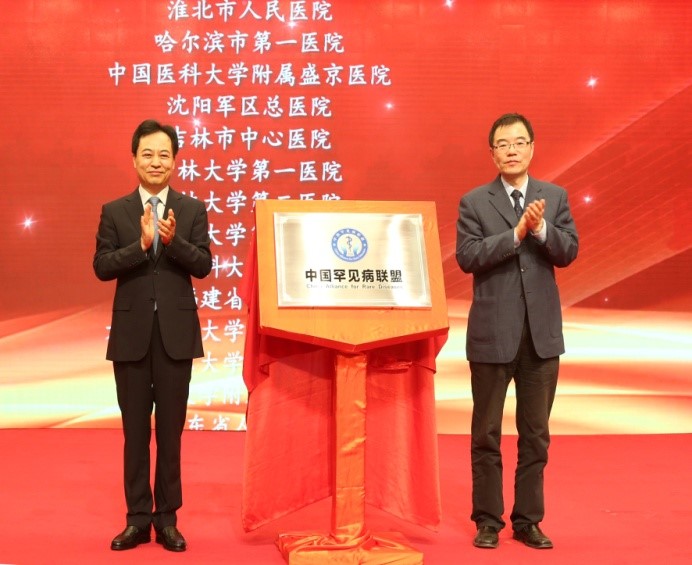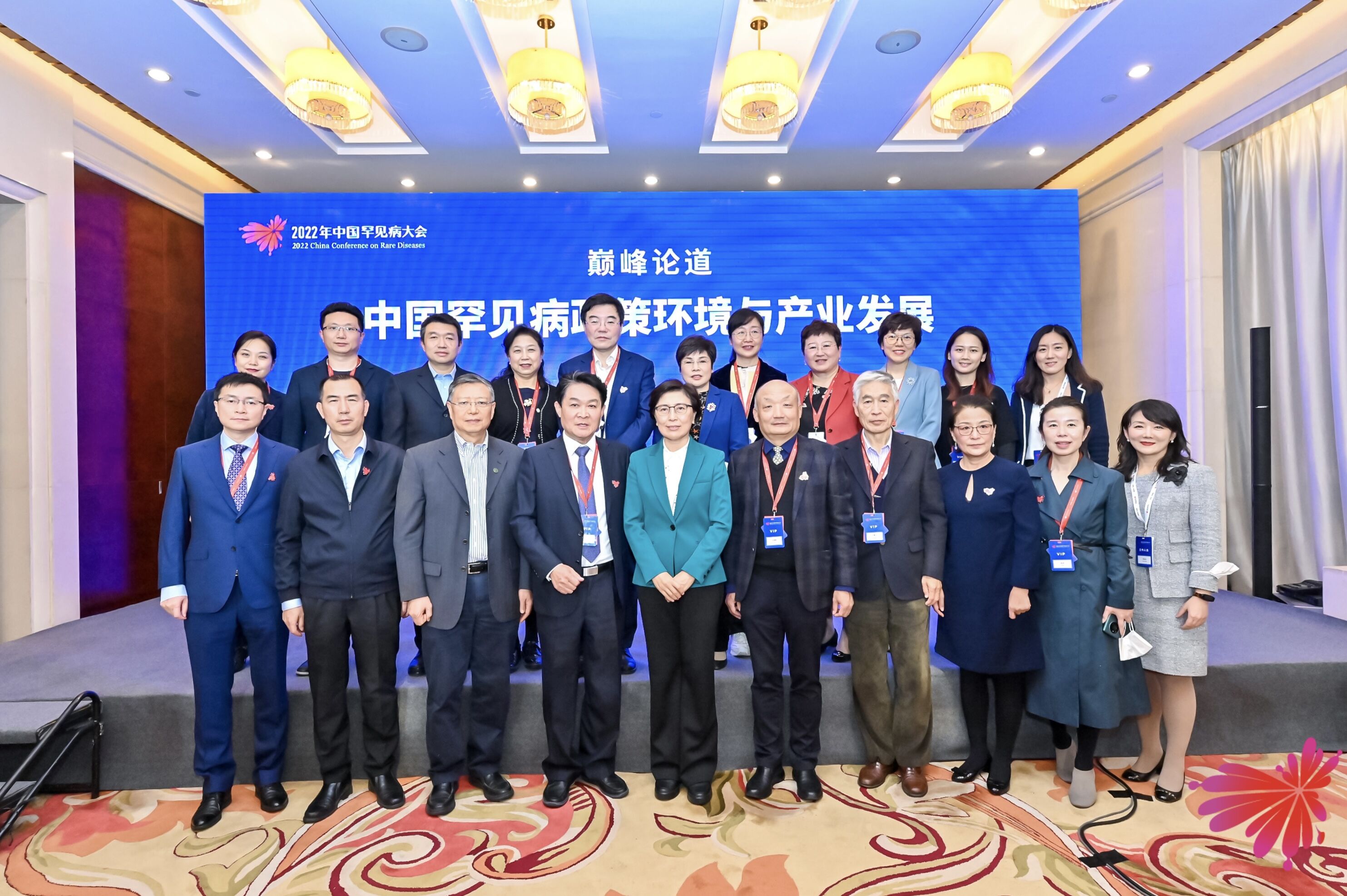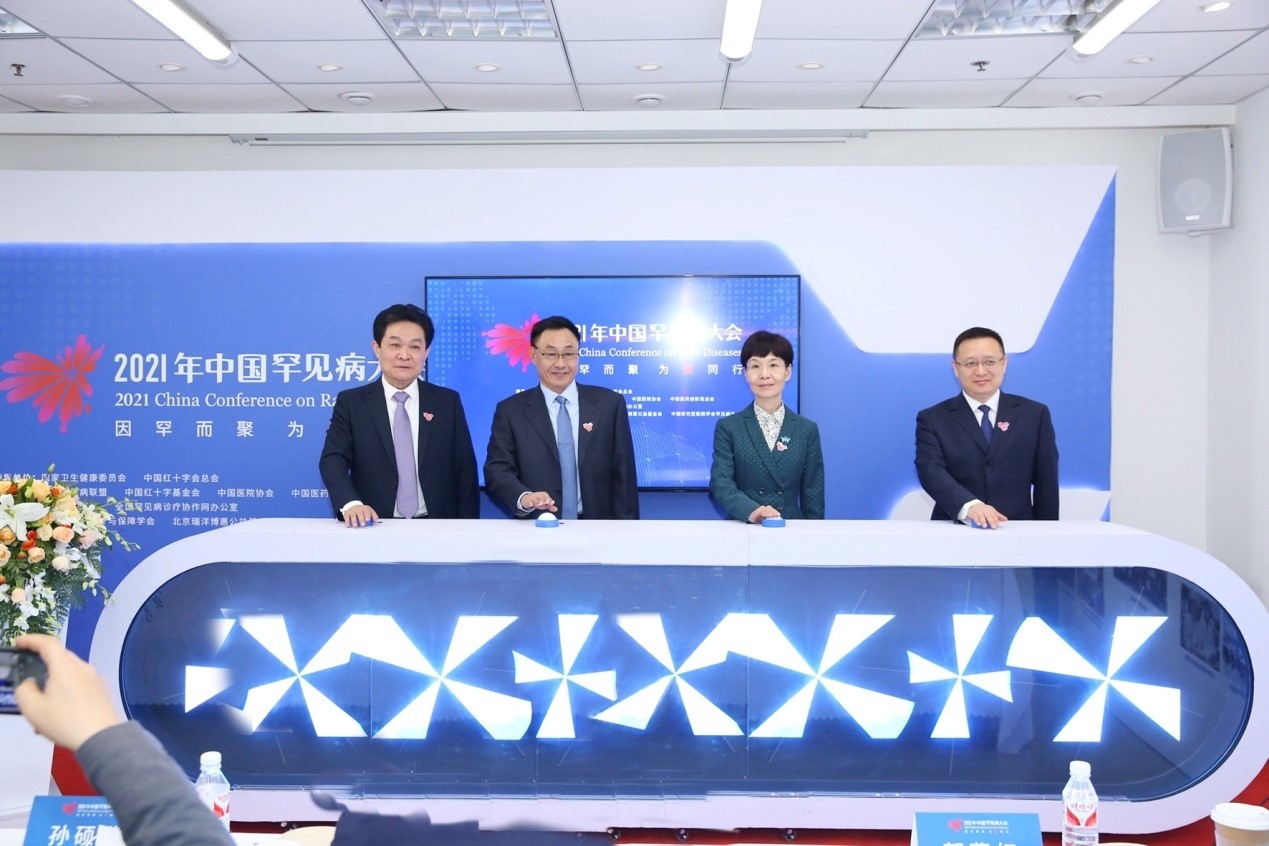The 2022 China Conference on Rare Diseases was held in Beijing from October 29 to November 4, 2022. The PUMCH rare disease team led by President Zhang Shuyang were active in the keynote speeches, summit lectures, sub-forums, video meetings over satellite, MDT discussions, online training and other sessions, contributing their share for making the conference, which the China Alliance for Rare Diseases has hosted for four years, such a productive and meaningful event.
Four years ago, the work on rare diseases just started in China. PUMCH, together with three associations and societies, initiated and established the China Alliance for Rare Diseases (hereinafter referred to as “the Alliance”), which has brought together a group of like-minded people with a sense of responsibility to tackle rare diseases. Over the past four years, the Alliance has built an industry platform, promoted the implementation of policies, formulated industry development plans, explored the building of rare disease treatment and drug availability systems, managed the creation of journals, conducted research and surveys, and carried out non-profit assistance activities. Such examples abound. They all speak to the whole-hearted dedication and devotion of PUMCH, the rare disease team in particular, and the country’s attention to issues concerning people’s livelihood.
Attention to and care of rare disease patients is an important metric of how civilized a society is. As we strive for a healthy China, we shall leave no one behind.
Building a Three-tiered Diagnosis and Treatment System for Rare Diseases as the Foundation
Since the 18th National Congress of the CPC, the Party and the State have made holistic arrangements for the treatment and research of rare diseases, requiring efforts be stepped up for ensuring rare disease drug availability and the prevention and control of major diseases. In the past four years, the Alliance has undertaken many governmental tasks and facilitated the formulation and implementation of relevant policies with the help of many entities such as PUMCH. The Alliance has also studied and facilitated matters related to the catalog of rare diseases, nudged the establishment of the National Rare Disease Diagnosis and Treatment Collaborative Network, organized the compliance of relevant teaching materials, guidelines, consensus and social survey reports, and addressed the accessibility of drugs for rare disease patients, among other things. As a result, the Alliance plays a strong role in guiding and coordinating relevant parties across the society to secure progresses in the diagnosis and treatment and insurance coverage of rare diseases in China.
Of the progresses secured, the establishment of the National Rare Disease Diagnosis and Treatment Collaborative Network is a milestone recognized by all. In 2019, the National Health Commission established the collaborative network with 324 member hospitals, with PUMCH being the only leading hospital at the national level tasked with centralized diagnosis and treatment and two-way referrals. On February 28, 2019, PUMCH built the national rare disease consultation platform, and it has ever since conducted MDT consultations for rare diseases (hereinafter referred to as “the rare disease MDT”) every Thursday at noon. As of October 31, 2022, 177 patients had received such rare disease MDT consultations at PUMCH, and more than 380 experts in various fields have participated in them.
The rare disease MDT not only provides a “one-stop solution” for patients, but also takes on the important task of training rare disease doctors. A popular saying goes that “a doctor who can treat rare diseases is rarer than a rare disease patient.” With the help of the National Rare Disease Diagnosis and Treatment Collaborative Network, the PUMCH rare disease MDT has opened its doors to the other 323 member institutions, allowing more doctors to “learn from its cases and grow”; it has also compiled a collection of rare disease cases featuring multidisciplinary collaboration, which serve as references that empower community-level physicians. Since the birth of the collaborative network, PUMCH, as the leading organization, has organized and carried out more than 50 training sessions in 22 cities across China. The trainings covered 81 disease types and reached more than 100,000 doctors, helping them improve their understanding and standardized diagnosis and treatment ability of rare diseases.
In June 2022, the Alliance again launched a survey among the 324 hospitals in the collaborative network to take stock of their clinical diagnosis and treatment expertise in rare diseases, reaching more than 40,000 doctors nationwide. The survey showed that more than 64% of the doctors were aware of policies related to rare diseases and were involved in the diagnosis and treatment of diseases listed in the first rare disease catalog, and that 80% of the doctors showed a strong desire to improve their rare disease diagnosis and treatment capabilities.
PUMCH President Zhang Shuyang, Vice President of the Alliance, said: “Every step forward in the medical community means the saving of many patients. The compassion we harbor for patients drives our perennial pursuit of safeguarding their health.”
Li Linkang, Executive President of the Alliance, said: “We paint a general picture of rare disease diagnosis and treatment in China to provide the government with the basis and advice for decision-making.”
Building a Precision Diagnosis and Treatment Platform
Rare disease researchers are often referred to as “lonely fighters”. Because of the rarity of cases, they often spend a decade or more collecting case data to conduct real-world studies. It is common for the researchers to dive into this area for a decade before getting anywhere. For example, Professor Xu Yan of the Department of Neurology, PUMCH explained: “It took us a decade to collect more than 3,000 cases of multiple sclerosis (MS) and neuromyelitis optica spectrum disorders (NMOSD). Our NMOSD cohort is currently the largest single-center long-term follow-up cohort in the world.”
High-level scientific research requires multicenter efforts. In December 2021, the Alliance took the lead in building China’s first clinical registry database for MS and related diseases, the MSNMO Base. In just two and half months, 15 MS teams in China have joined, registering a total of 3,776 patients. As a result, the single-center MS research gave way to a multicenter prospective observational cohort study, greatly improving the quality of domestic MS clinical studies.
Dai Yi, Associate Professor of Neurology at PUMCH, is a beneficiary of this platform. He leads the world’s largest Duchenne/Becker myotonic dystrophy registry-based follow-up study, “which 35 major hospitals for rare diseases in cities across the country have joined and which now manages 3,600 patients, progresses that have been made with the support of the National Rare Diseases Registry System of China (NRDRS) and with the help of the Alliance.”
Having doctors raise questions for clinical studies and having enterprises address clinical applications of the research outcomes are necessary components of translation, a task that involves industrial, academic and research input. In the view of Jin Hongzhong, Director of the Special Committee on Rare Skin Diseases under the Alliance and Director of the Department of Dermatology at PUMCH, the Alliance helped him realize a long-term wish - the release of China’s first AI-assisted recognition tool for generalized pustular psoriasis (GPP) on June 25, 2022.
“Thanks to the joint building and sharing platform established by the Alliance, an innovative company reached out to the special committee, proposing to work together for a change in the diagnosis and treatment paradigm for rare skin diseases.” Trained with the over 1,000 skin photos of real GPP patients that PUMCH accumulated during its long-term research of rare skin diseases, the AI image recognition technology now exceeds 85% in terms of recognition accuracy. “We hope to improve the care of rare skin diseases through this project and figure out new diagnosis and treatment models for rare diseases.”
The Alliance is committed to promoting synergistic innovations in clinical and research as well as drug R&D progresses for rare diseases, such as research in precision diagnosis and treatment technology, AI and big data application, and R&D of rare disease drugs and medical devices, among a long list of other things. October 2022 saw the launch of the “Central Government Specialized Public Welfare Fund to Support Rare Disease Diagnosis and Treatment Capacity Improvement” program, led by PUMCH and implemented with the help of the Alliance. The program provides free genetic testing for domestic rare disease patients, subsidizes rare disease MDT for member hospitals of the collaborative network, and supports professional capability training of rare disease doctors, all for across-the-board improvement in the diagnosis, treatment and implementation capability for rare diseases nationwide.
Promoting Reform to Address the Last-mile Accessibility of Rare Disease Drugs
As of February 2022, for the 121 rare diseases listed in the first catalog of rare diseases, there are drugs globally available for 86 of them; in China, there are drugs available for 77 of them. That means patients of the rest 9 rare diseases face the dilemma of “drug available overseas but not domestically”. To make the life-saving drugs truly accessible to rare disease patients, the Alliance and related hospitals have made many ground-breaking explorations that “are no less bold than blazing a new trail on the cliff”.
Mitotane tablets have been approved for the treatment of adrenocortical cancer in Europe and the United States, but are not marketed in China. To make the drug accessible to Chinese patients, the Alliance and hospitals pored over policies to look for a procurement channel and then wasted no time in getting the materials ready. In March 2019, PUMCH submitted an application to the competent authorities for a one-off import of Mitotane tablets. The success with that was hailed as “a ground-breaking triumph in getting special drugs for rare diseases into China”.
Clobazam, a “life-saving drug” to some patients with rare or intractable epilepsy, is also a Class II psychotropic drug under strict control in China. To satisfy the drug needs of patients, the government led all parties to take active measures. Accordingly, PUMCH and the Alliance together invited neurology and pediatrics experts to present their arguments for clobazam, on the basis of which they launched the application for a one-time import of clobazam and obtained the approval. The two parties also organized national experts to compile the “Expert Consensus on Clobazam for Intractable Epilepsy (2022)” to ensure rational use of the drug. On September 22, 2022, the first prescription of clobazam in China was written at PUMCH.
Expanded access to an investigational medical product outside of a clinical trial (hereafter referred to as “compassionate use”) is seen as a path of hope for many rare disease patients. But the absence of specific implementation rules accompanying regulations and of precedents to follow make this path difficult to take for patients. In March 2021, Ms. Zhang (a pseudonym), a patient diagnosed with the rare disease of paroxysmal nocturnal hemoglobinuria (PNH), sought the help of the Alliance because she, having run out of drugs, was in urgent need of a new drug in Phase III trials from abroad. To help her, the Alliance, PUMCH, the National Medical Products Administration and the drug company concerned worked together to pull off the first case of compassionate use for a rare disease patient in China; in this race against time, they finally, after 83 days, succeeded in delivering the internationally leading Phase III drug to Ms. Zhang in time.
The introduction or use of Mitotane, Laronidase, Tafamidis, Icatibant, Burosumab and Iptacopan, among other orphan drugs for rare diseases, is a manifestation of the concerted efforts of the government, the Alliance, hospitals, enterprises and patient organizations. From having no drugs available to having difficult access to drugs and now finally affordable access, the big strides in drug availability and accessibility have benefited many more patients with rare diseases.
G. Baynam, President of the Undiagnosed Diseases Network International, described the Chinese way as “a typical model of collaboration that leads the world in the diagnosis and treatment of rare diseases”. It reflects China’s improved comprehensive national strength and the country’s adherence to the “people first, life first” philosophy. For rare disease patients in China, spring is just around the corner.

Academician Zhao Yupei, Honorary President of PUMCH, and Zhang Zongjiu, former Director of the Bureau of Medical Administration, the National Health Commission inaugurated the Alliance

Group picture of experts attending a high-level session of the China Conference on Rare Diseases

Kickoff of the “Central Government Specialized Public Welfare Fund to Support Rare Disease Diagnosis and Treatment Capacity Improvement” program
Written by: Chen Mingyan
Picture courtesy: The Department of Publicity
Translator: Liu Haiyan
Editor: Wang Yao
